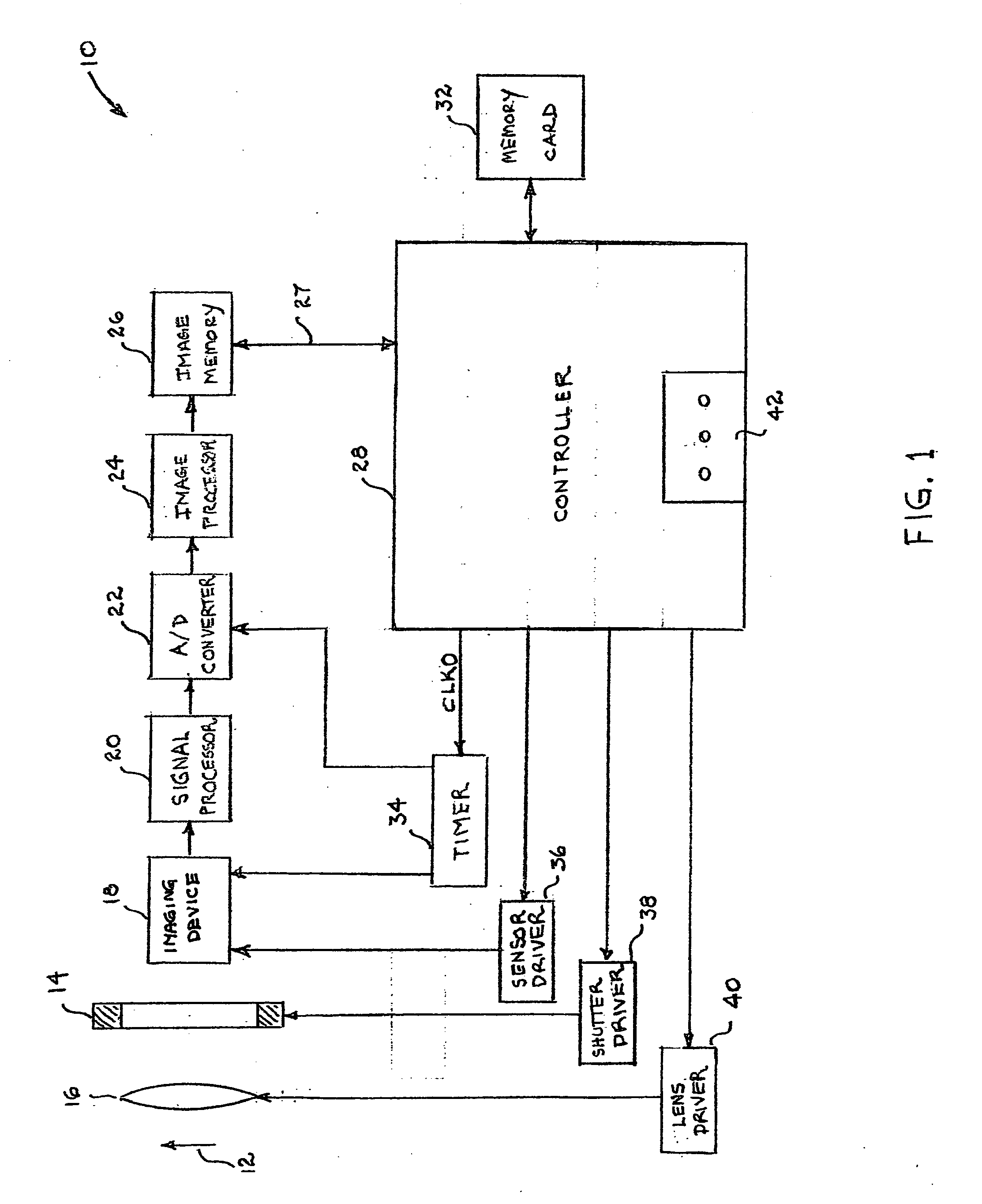Multiple exposure optical imaging apparatus
a multi-exposure, optical imaging technology, applied in the field of digital cameras, can solve the problems of reducing the signal-to-noise ratio of the camera, unable to reduce the state of the art light sensor, and unable to achieve the effect of reducing the effective number of pixels and increasing the spatial resolution
- Summary
- Abstract
- Description
- Claims
- Application Information
AI Technical Summary
Benefits of technology
Problems solved by technology
Method used
Image
Examples
Embodiment Construction
Digital Camera Configuration
[0020] Before discussing our invention in detail, we turn first to FIG. 1, which shows a block diagram of a well-known optical imaging apparatus 10 for generating and storing or recording electronic data representing an optical image of an object 12. (By the term object we mean anything from which light emanates by a process of, for example, reflection, refraction, scattering, or internal generation.) For simplicity we will assume in the following discussion that apparatus 10 is a digital camera comprising a shutter 14 for alternately blocking light from image 12 from entering the camera or transmitting such light into the camera. Such digital cameras are well known to have the capability of generating still images, video images, or both.
[0021] When the shutter 14 is open, light from object 12 is focused by a lens system 16 onto an imaging device 18. The lens system typically includes a zoom lens subsystem, a focusing lens subsystem and / or an image shi...
PUM
 Login to View More
Login to View More Abstract
Description
Claims
Application Information
 Login to View More
Login to View More - R&D
- Intellectual Property
- Life Sciences
- Materials
- Tech Scout
- Unparalleled Data Quality
- Higher Quality Content
- 60% Fewer Hallucinations
Browse by: Latest US Patents, China's latest patents, Technical Efficacy Thesaurus, Application Domain, Technology Topic, Popular Technical Reports.
© 2025 PatSnap. All rights reserved.Legal|Privacy policy|Modern Slavery Act Transparency Statement|Sitemap|About US| Contact US: help@patsnap.com



